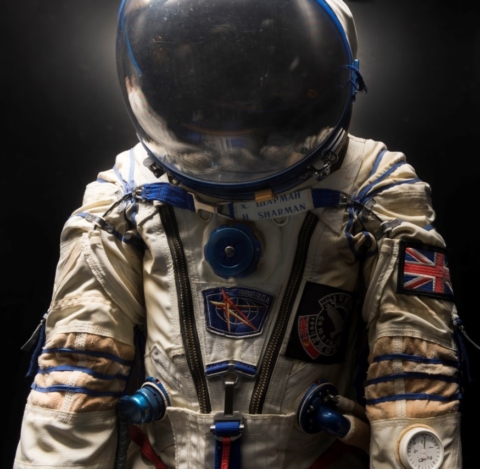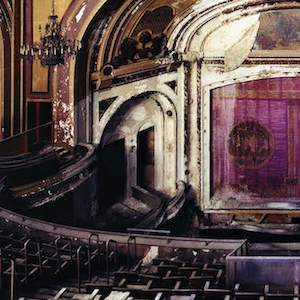When Arts meets Science
By Jo Phillips
Celebrating creativity and new platforms to develop contemporary art, .Cent chose a couple of upcoming events to take place this September where arts meets science.
In the first part of the post we look at one of the most important elements central to taking our world forward; the idea is that as humans we can turn the waste we produce into medicines that can save us as well as clean up the environment we have destroyed. It is now down to big business to take this truly creative thinking and make it an everyday reality in order to build a world fit for us now and generations to come. Artists BurtonNitta worked with some of the best minds in the science world to create an artists impression and interpretation of how to clean our wastelands into somewhere fit to live, plant and work. The article outlines of the ideas that could in reality change our worlds. This project was funded by Engineering and Physical Sciences Research Council.
The second part of the post looks at The Edible Cinema at The Science Museum, which endeavours to bring together a multi-sensory experience, where site and taste come together.
The Instruments of the Afterlife Contaminated post-mining wastelands and landfill sites leave a harmful legacy for future generations. The toxic pollutants left behind enter the food chain via plants and are blown into the air as dust. These heavy metal pollutants leave the land uninhabitable and pollution can enter into our bodies such as through food and with detrimental effects to human health. But what if this pollution could be a valuable future resource and desirable product?
The Transformosphere, 2015 by BurtonNitta
This future vision may be closer than we think. Scientists have developed a cheap and economical way to clean contaminated land of heavy metals, using plants that absorb pollution from the soil and engineered bacteria to extract the metal contaminants from the plants. As a result they harness the abilities of other organisms to collect useful nanometals from polluted land. These nanometals can be made into useful materials and products. They describe the aim of their research as “The idea is to bring back to life areas of land lost through centuries of misuse, making land decontamination financially viable, and providing our manufacturing industries with new materials, without the need for mining and smelting.”
Artists, BurtonNitta are collaborating with the group of scientists leading this research from the universities of Birmingham, Cranfield, Edinburgh, Newcastle and Warwick. The work is supported by the UK’s Engineering and Physical Sciences Research Council. The scientists identify the importance of collaborating with artists: “Art and science have often been pursued as a joint endeavour. Yet to master either, we must have the innate creativity to accomplish something new as well as the ability to use the right tools to complete the task at hand. If that combination can be achieved, then it should come as no surprise that art and science together have the power to address difficult, complex problems as well as exciting new possibilities.”
Prototype decontaminating suit to harvest nanometals from the body, 2015 by BurtonNitta
Beside the scientists research, one of BurtonNitta’s responses is a prototype suit (shown in image above ) to recover heavy metals, such as arsenic, that accumulate in the body’s hair, skin and excreted in sweat and urine. The suit proposes to feed these bodily products to engineered bacteria and fungus, which transform them into useful nano metals. In the image below we can see how the cycle works.
An engineered bacteria is created and when added to the contaminated waste transforms this into useful materials. These valuable materials can be used in medical treatments, fuel production and industry. Engineered bacteria at University of Edinburgh, 2015 photograph by BurtonNitta
System map of CL4W project with new possibilities built from the contamination of past events, 2015 by BurtonNitta
Launch at V&A, 26th & 27th September 2015 as part of Digital Design Weekend For more information about the project, visit their website here: burtonnitta and their Twitter @burtonnitta instagram:burtonnitta
Artists: Michael Burton & Michiko Nitta Composer: Neil Luck Musician: Lawrence Tatnall Scientific team leaders:
Cleaning Land for Wealth (CL4W): Dr Kerry Kirwan, University of Warwick
CL4W Outreach: Dr Louise Horsfall, University of Edinburgh
Dr David Book, Birmingham University
Prof Adam Harvey, Newcastle University
Dr Philip Longhurst, Cranfield University
Creative Outreach For Resource Efficiency:
Professor Jacqui Glass, Loughborough University http://www.core-community.net
Edible Cinema @Science Museum
“See the film, taste the film” Edible Cinema presents a collaboration with the Science Museum on September 30th for a screening of Tim Burton’s Charlie and the Chocolate Factory. Organised by Polly Betton and experimental food outfit, Blanch & Shock, each Edible Cinema outing promises to harness the power of taste, smell and texture to enhance the film experience. Each guest is supplied with a tray of numbered ‘mystery boxes’, containing a bite-sized tasting menu corresponding to scenes in the film. Edible Cinema will be part of a series of food and science-related events, with Heston Blumenthal confirmed to give a talk separately o the same evening at the museum.
For more details on the event, please visit
ediblecinema.co.uk www.sciencemuseum.org.uk
Buy your tickets here www.tickettailor.com












